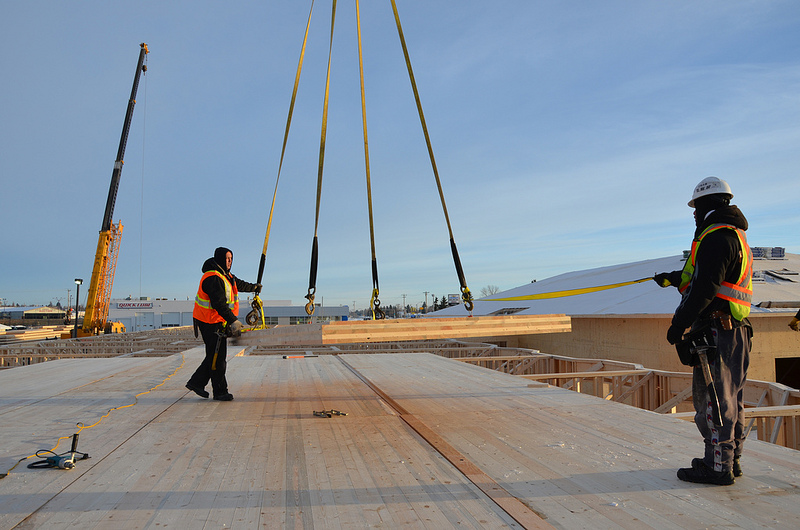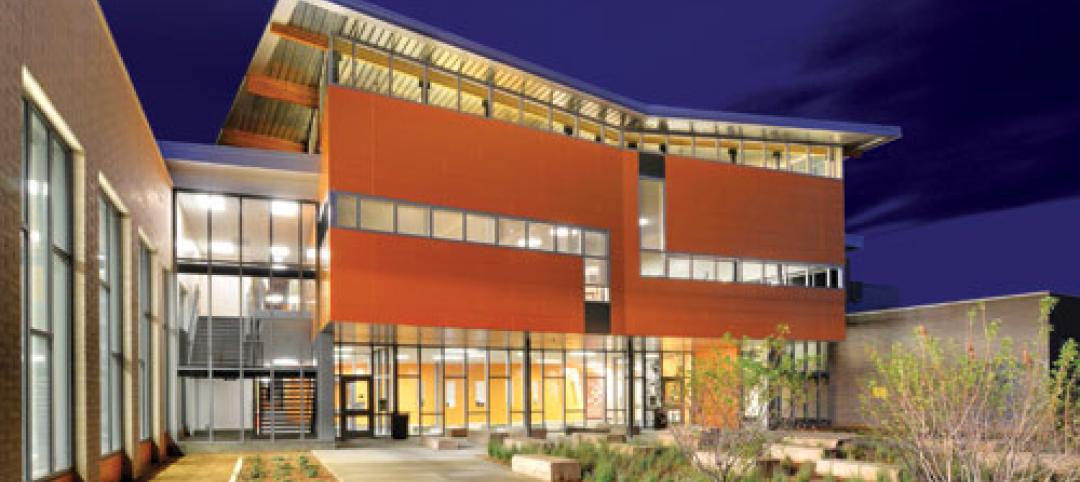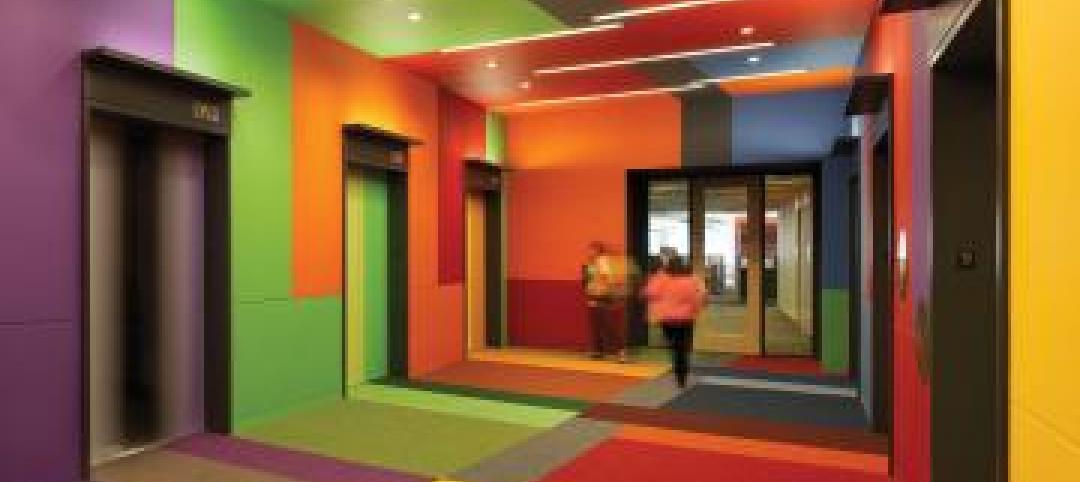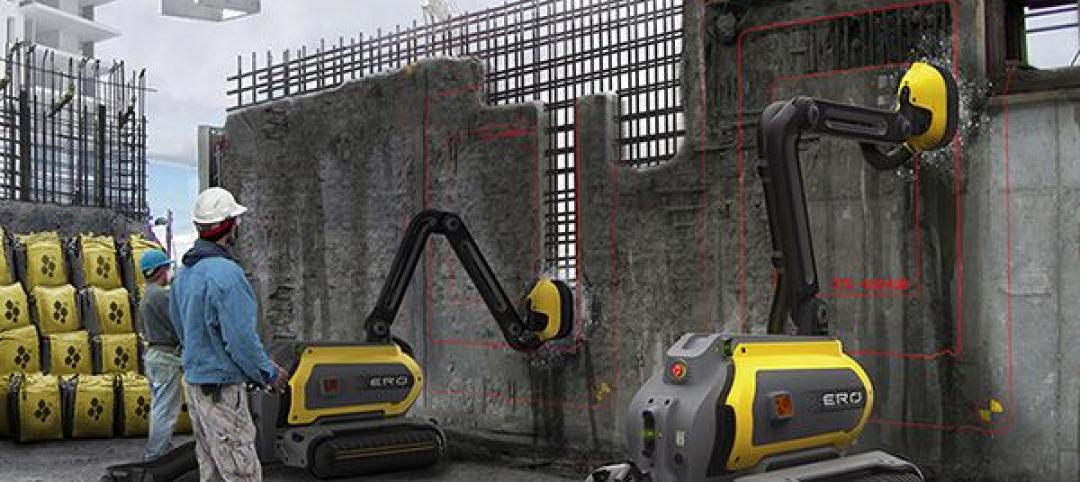Cross-Laminated Timber (CLT) was initially developed in Europe as an alternative to stone, masonry and concrete construction. It is essentially mass timber plates made from smaller framing lumber laminated crosswise on their wide faces. North American CLT is typically laid up as three-, five-, seven-, and nine-layer panels of 2x6 lumber finger jointed lamstock.
Here in North America, one might first see these mass timber plates and wonder, “Why on earth would I need that big piece of wood to build with?” Well, there are several common misconceptions and myths surrounding the use of wood as a building material, especially these new mass timber CLT panels.
ALSO SEE: Mass timber construction grows up
The first myth I always hear is, “It won’t meet the code,” then next, “It's wood, it will just burn down.” My favorite is, “You are cutting down all our big trees.”
One of the best resources for clarifying the topic is the 2013 US CLT Handbook. FPInnovations—in collaboration with the American Wood Council (AWC), the United States (U.S.) Forest Products Laboratory, APA, and U.S. WoodWorks—published the comprehensive guide to provide technical information for building professionals, illustrating CLT applications adapted to current codes and standards. The handbook addresses a number of these common misconceptions about wood and CLT panels.
Myth #1 — “Cross laminated timber is not in the Building Code.”
CLT panels have great potential for providing cost-effective building solutions for residential, commercial, and institutional buildings, as well as large industrial facilities in accordance with the International Building Code.
In 2015, cross laminated timber will be incorporated in the International Building Code (IBC). The IBC recently adopted ANSI CLT Standard PRG 320 into the 2015 IBC, (see US CLT Handbook Chapter 1, p. 2) so you can request a design review based on it now and submit it as an alternate material, design and methods (AMM).
Myth #2 — “Cross laminated timber is a wood product and, therefore, easily catches on fire.”
Like using a few 12-inch-diameter logs to start a camp fire, mass timber does not catch fire easily. In fact, cross laminated timber acts more like concrete. Mass timber is not conventional so it is very hard to light, and once it is lit, it wants to put itself out (see US CLT Handbook Chapter 8, p. 2).
A research project recently completed at FPInnovations showed that CLT panels have the potential to provide excellent fire resistance, often comparable to typical heavy construction assemblies of non-combustible construction. CLT panels can maintain significant structural capacity for an extended duration of time when exposed to fire.
Myth #3 — “You have to bring in a specialized crew to install cross laminated timber.”
Keep in mind, CLT is just another form of glue laminated timber (glulam). It is just wood, so it designs and builds on the earlier technology. CLT panels, like other industry panels (precast concrete or SIP panels), provide easy handling during construction and a high level of prefabrication facilitation and rapid project completion.
A conventional wood installation crew with other panel experience can lift, set, and screw down CLT wood panels, and with a manufacturer provided installation plan, it goes even faster (see US CLT Handbook Chapter 12, p. 1).
Myth #4 — “Mass timber is not good for the environment since many trees need to be cut down to create the building material.”
CLT panels are manufactured 2x6 lumber from trees harvested from sustainably managed forests, and mostly Mountain Pine Beetle kill trees. If we don’t use them, they decay and emit carbon back into the atmosphere.
Wood is also the only primary structural material that grows naturally and is renewable. In fact, according to “Sustainable Forestry in North America,” during the last 50 years less than 2% of the standing tree inventory in the U.S. was harvested each year, while net tree growth was three percent.
Myth #5 — “Cross laminated timber is expensive.”
When considering the total in-place value of a CLT system, it is cost competitive to other plate building materials. But you also need to consider all the value added benefits:
• More savings can be found in the reduced installation cost, usually 50% cheaper than installing other plate materials.
• With an earlier project completion date, you are open for business sometimes months ahead of schedule.
• The building structure will weigh less than half the weight of other construction types, so the foundation costs less money.
• Job site safety is dramatically increased due to the prefabricated CLT panels and usually the only power tools are pneumatic drills.
The intent of cross laminated timber is not to replace light-frame construction, but rather to offer a versatile, low-carbon, and cost-competitive wood-based solution that complements the existing light frame and heavy timber options while offering a suitable candidate for some applications that currently use concrete, masonry, and steel.
While it is a relatively new building system of interest in North American construction, the benefits speak for themselves. For more information on CLT wood, visit www.masstimber.com.
About the author
Kris Spickler lives in Northern California and is a Heavy Timber Specialist for Structurlam Products Ltd. in Penticton, B.C., Canada. He holds a Bachelor of Science degree in Civil Engineering, with emphasis on wood structural design, from Fresno State University, California. As a California licensed Professional Engineer since 1981, he has worked in the Engineered Wood Products industry for 25 years. The last ten years he has focused on Engineered Wood Lumber used in Heavy Timber design and Cross Laminated Timber.
Related Stories
| Sep 17, 2013
World's first 'invisible' tower planned in South Korea
The 1,476-foot-tall structure will showcase Korean cloaking technology that utilizes an LED façade fitted with optical cameras that will display the landscape directly behind the building, thus making it invisible.
| Sep 15, 2013
How to build a rainscreen using fiber cement panels - AIA/CEU course
This course will review the cause and effects of moisture intrusion and explain how fiber cement panels can be used as a rain screen to reduce moisture build-up, rotting interior walls, and mold growth.
| Sep 9, 2013
Top 25 continuing education courses on BDCuniversity
An overview of the 25 most popular continuing education courses on BDCuniversity.com.
| Aug 26, 2013
13 must-attend continuing education sessions at BUILDINGChicago
Building Design+Construction's new conference and expo, BUILDINGChicago, kicks off in two weeks. The three-day event will feature more than 65 AIA CES and GBCI accredited sessions, on everything from building information modeling and post-occupancy evaluations to net-zero projects and LEED training. Here are 13 sessions I'm planning to attend.
| Aug 6, 2013
Australia’s first net zero office building features distinctive pixelated façade
Australia's first carbon neutral office building, featuring a distinctive pixelated façade, recently opened in Melbourne.
| Jul 16, 2013
Robotics: A new way to demolish buildings
A robot prototype uses water jets to break up concrete structures and then sucks up the water and debris for reuse and recycling.
| Jul 10, 2013
World's best new skyscrapers [slideshow]
The Bow in Calgary and CCTV Headquarters in Beijing are among the world's best new high-rise projects, according to the Council on Tall Buildings and Urban Habitat.
| Jul 10, 2013
TED talk: Architect Michael Green on why we should build tomorrow's skyscrapers out of wood
In a newly posted TED talk, wood skyscraper expert Michael Green makes the case for building the next-generation of mid- and high-rise buildings out of wood.
High-rise Construction | Jul 9, 2013
5 innovations in high-rise building design
KONE's carbon-fiber hoisting technology and the Broad Group's prefab construction process are among the breakthroughs named 2013 Innovation Award winners by the Council on Tall Buildings and Urban Habitat.
| Jun 28, 2013
Calculating the ROI of building enclosure commissioning
A researcher at Lawrence Berkeley National Laboratory calls building enclosure commissioning “the single-most cost-effective strategy for reducing energy, costs, and greenhouse gas emissions in buildings today.”
















